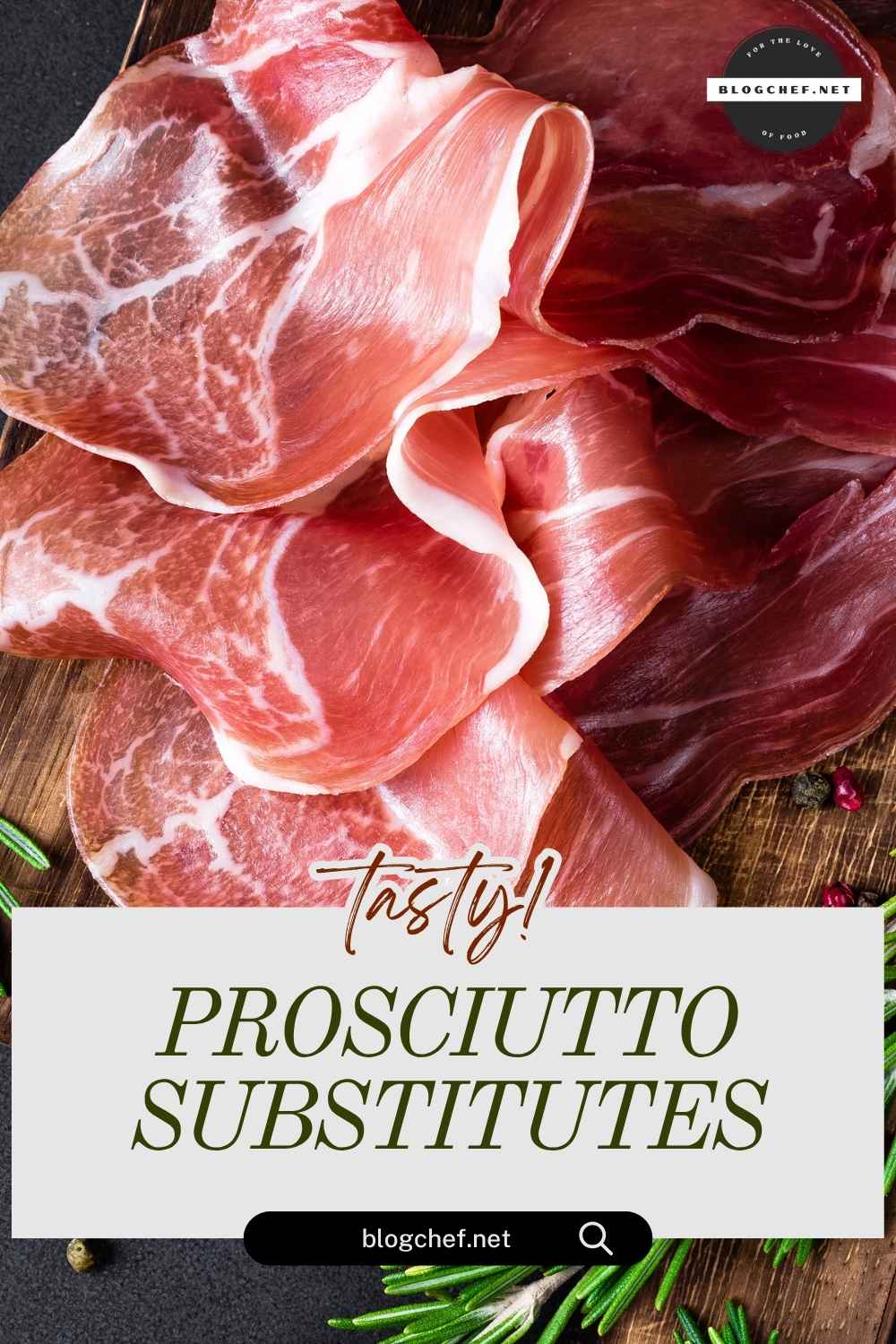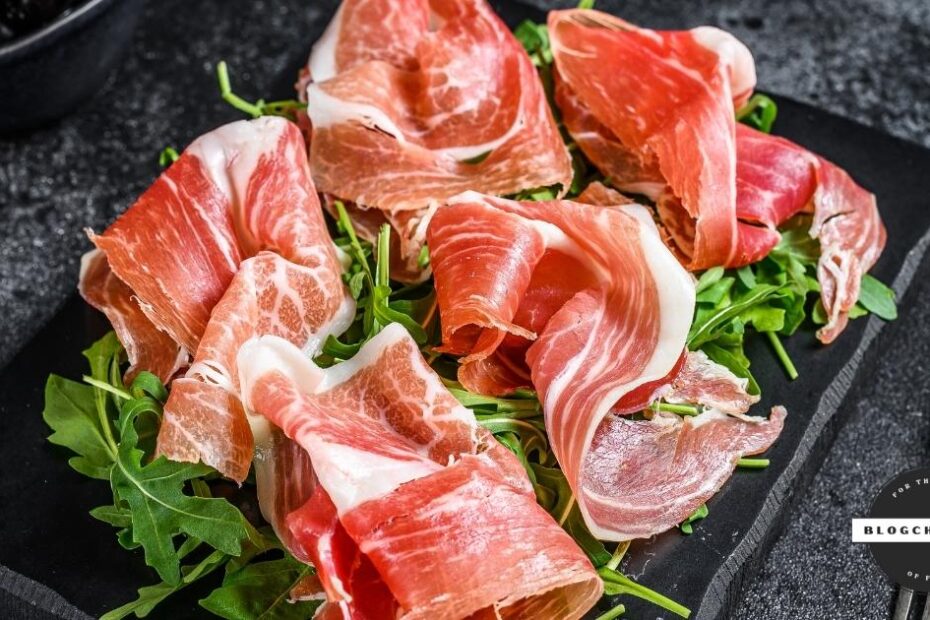Prosciutto lends a salty, savory, melt-in-your-mouth vibe to a range of dishes, from pizza to pasta. But you can’t always find prosciutto, especially if Walmart is the fanciest grocery store in your town.
The good news is, you can make those salty prosciutto dishes with other meats and even some non-meat options. Here are seven tasty alternatives to prosciutto that you can use your culinary endeavors.
1. Serrano ham
- ⌛ [SPECIALIZED CURING FOR EACH HAM]: Forget other experiences with salty,…
- ✔️ [GLUTEN-FREE, NO ALLERGENS, NO GMO]: We only used natural prime…
- 🍽️ [ENJOY WITH FRIENDS AND FAMILY]: Cut some jamon serrano slices with…
- Curation time: approx. 10 months.
- The cured serrano ham is a product made from the best pieces of pork that…
- It has a characteristic colour that changes from pink to purply red in the…
Substitute the same quantity of serrano ham for prosciutto.

This Spanish cured ham is similar in texture and saltiness to prosciutto. It goes great with antipasto plates, salads, and charcuterie boards. Serrano is a little drier and saltier, so if you’re using it raw, you might want to drizzle some olive oil over it.
2. Jamon Iberico
Substitute slightly less Jamón Ibérico than prosciutto in your recipes.
Jamón Ibérico is dry-cured and aged for months, just like prosciutto. This gives it the same silky texture and umami flavor. Use sparingly. It has a stronger flavor — and higher price.
3. Speck
Substitute speck for prosciutto in the same quantity.
Speck has a smoky flavor, so it goes well with creamy cheeses or eggs. It is an Italian cousin to prosciutto and has a thin, delicate texture.
4. Pancetta
- Meets standards for animal welfare, feed, and more, so you can know about…
- No added growth hormones or antibiotics, ever
- No animal by-products in feed
- Great All Natural Snack item for any time
- Humanely Raised
- rBGHFree
Substitute pancetta for prosciutto in the same quantity. You may want to reduce the salt in the recipe.
Pancetta is not usually eaten raw, so if you want to use it in pasta or cooked dishes, cook it first. When you crisp it up, pancetta gives you the same salty, meaty flavor. It’s delicious on top of roasted vegetables or in carbonara.
5. Bacon
- One 16 oz package of Oscar Mayer Naturally Hardwood Smoked Bacon
- Naturally hardwood smoked Oscar Mayer bacon
- Slow smoked with real wood
- One 16 ounce package of Naturally Applewood Smoked Thick Cut Bacon
- Some of your favorite Fresh products are now part of the Amazon Grocery…
- Gluten free
For every two slices of prosciutto, use one slice of cooked bacon.
Opt for milder bacon flavors with minimal smoke. Cook the bacon until it’s just crisp, then let it drain on paper towels. Try bacon as a prosciutto substitute with pasta, pizza, or stuffed chicken. The chewy texture and sweet-salty balance mimics prosciutto in these cooked recipes.
6. Turkey bacon
- One 12 oz package of Oscar Mayer Turkey Bacon, 21-23 Slices
- Oscar Mayer Turkey Bacon has 58% less fat and 57% less sodium than USDA…
- Oscar Mayer Turkey Bacon can be cooked on the stove, in the oven or…
- 60% less fat than USDA data for pork bacon
- 2 grams of protein; 30 calories per serving
- Gluten free
Use one slice of turkey bacon for every one slice of prosciutto in your recipe.
Turkey bacon is a leaner choice that still adds salt and umami. It works well in sandwiches, for breakfast, and for light meals. You can brush the turkey bacon slices with olive oil to add more flavor.
7. Thin-sliced smoked salmon
You can use thinly sliced smoked salmon in the same quantity as prosciutto.
Smoked salmon works well as a substitute on cold dishes. Like prosciutto, it has a smooth texture and salty flavor. Try it with with crostini, burrata, or melon.
Substituting prosciutto FAQs
Is it safe to eat prosciutto raw?
Yes, it is safe to eat prosciutto raw. It is dry-cured. The curing process takes out moisture and stops bacteria from growing.
What makes prosciutto, bacon, and pancetta different from each other?
Prosciutto is raw meat that has been dry-cured and aged. Bacon is cured, then smoked, and requires cooking. Pancetta is cured, but not smoked.
Is prosciutto just ham that’s been cut thin?
Prosciutto is not thin-sliced ham exactly. Both prosciutto and ham come from the back leg of a pig, but prosciutto is air-dried and aged for months, which gives it a rich, nutty flavor and soft texture that regular ham doesn’t have.
Are there vegetarian substitutes for prosciutto?
Yes, there are vegetarian substitutes for prosciutto. Try thinly sliced roasted eggplant, sun-dried tomatoes, or even mushrooms that have been marinated. When you drizzle olive oil or balsamic glaze on them, they taste even better and have more umami.
Last update on 2025-12-25 / Affiliate links / Images from Amazon Product Advertising API








